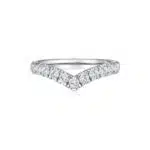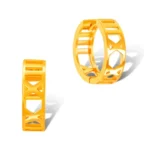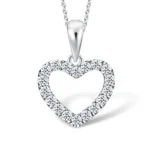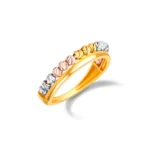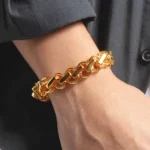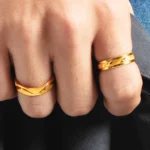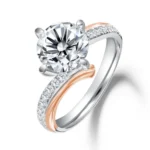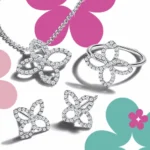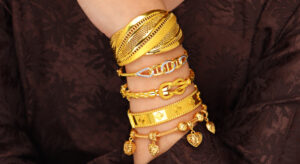Rings have often been the preferred way as a physical embodiment of a special bond that is shared between a couple. As beautiful and ethereal as it is, the truth is still apparent: diamond rings can be highly expensive. Most people would think twice to go for their preferred carat size rather than bearing with the premium price tag. But did you know – there is an option for you to sport a sparkling ring without breaking the bank?
Diamond simulants are gemologically similar to mined diamonds. This means they offer an elegant flair too despite comprising of varying material properties. There are a few forms of simulants that are popular in the market and make for an affordable jewellery option.
Cubic Zirconia

As one of the highly sought-after diamond simulants, Cubic Zirconia (CZ) possesses great clarity because it has no inclusions. While diamonds are made of carbon, CZ, on the other hand, is made from zirconium dioxide. Even though there is a difference in chemical composition, CZ has clarity and colour that managed to attract many people. However, this may not fit the bill if you are looking for a close alternative to a mined diamond. As compared to diamonds, CZ offers a lower refractive index and does not capture light in the same way, which results in a lower brilliance. The level of brilliance becomes more noticeable as the carat size of CZ stones gets bigger. This pales in comparison to how actually alluring a diamond is.
On the Mohs scale, CZ scores an 8 since it is not made from carbon. It is also not as durable compared to mined diamond – which means it may not be suitable for long-wear with proneness to chips and scratches. And over time, the brilliance will lessen due to accumulation of dirt.
Moissanites

A recent addition to the jewellery market, moissanite is another prominent diamond simulant. It is made from silicon carbide (SiC), a material that allows for high refractivity and brilliance. Moissanites gems score a 9.25 on the Mohs scale, proving to be much more durable as compared to cubic zirconias.
However, moissanites have their drawbacks too. Moissanites are deemed as ‘colourless’, but under certain light conditions, they are able to project hues of yellowish or greyish tones. When it comes to reflecting light, it’s different as compared to a diamond – moissanites emit a fiery flash of rainbow which might come across as gaudy to some.
Rhinestones

It is likely you might have heard of this diamond imitation too. Rhinestones come in various forms, such as glass stones and crystal stones. They are made from rock crystals but acrylic or resin materials have also been used – which makes them highly accessible to the masses.
As such, the quality of rhinestones does not come close to the actual diamond. They can reproduce the brilliance of a carbon-based diamond under natural sunlight, but they have the tendency to turn yellow, especially under exposure to moisture or high temperatures. They are also not as durable, and scratches can easily form over time.
Lab grown diamonds

Introducing the lab grown diamonds: they are far from being simulants of our favourite sparkling gemstone. Lab grown diamonds share the same gemological characteristics and chemical composition as mined diamonds. On the Mohs scale, they score a perfect 10 since they are also made entirely from carbon.
Similar to mined diamonds, no two lab grown diamonds are alike as they also possess impurities which give an array of hues and saturation levels. This falls under the colour range of grade D (colourless) to grade Z (light yellow or brown) – its value and quality is determined by an absence of colour. As such, lab grown diamonds can also emit a high level of brilliance that most people desire from mined diamonds.
The only difference that sets lab grown diamonds and mined diamonds apart is their origins. As the name suggests, lab grown diamonds are formed through advanced technology in a lab, which skips the entire diamond mining process. This is also appealing for consumers seeking a more sustainable purchase of their contemporary jewellery.
Final thoughts
Lab grown diamonds is certainly ideal for millennials and consumers looking for diamond alternatives at a wallet-friendly price tag. For our Star Carat lab grown diamonds at SK Jewellery, you can easily attain a 1 carat diamond ring for the same price as a 0.4 carat mined diamond – without compromising on quality! Our lab grown diamonds also fall under the Type IIA category, which makes up 2% of mined diamonds in the world.
As you shop for diamonds from the comfort of your home, schedule your virtual appointment with us! Our virtual consultant is ready to assist with all your needs so you can get the right bling and enjoy significant savings.







